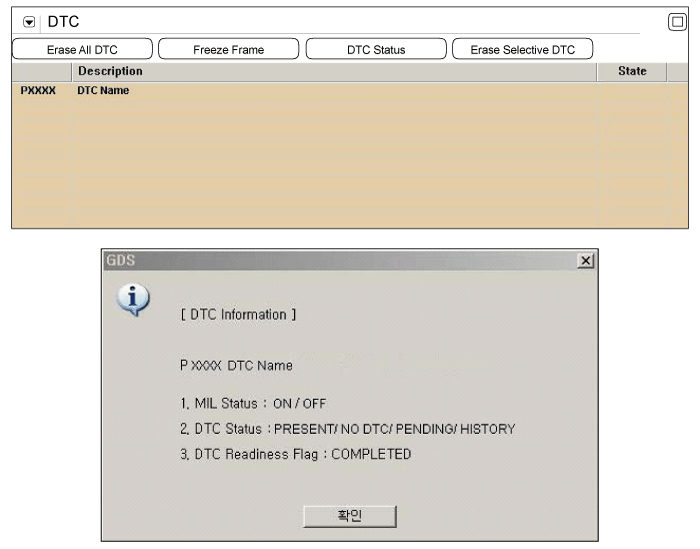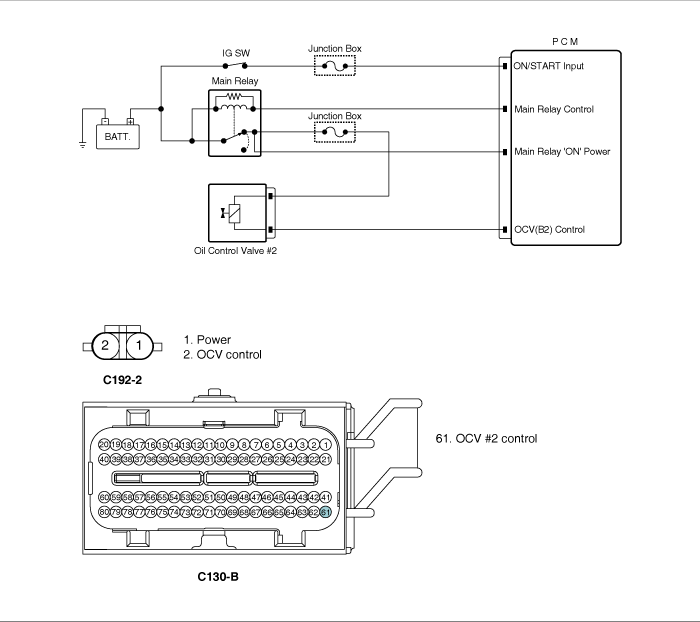Check DTC Status
Connect scantool to Data Link Connector(DLC).
IG "ON".
Select "DTC" button, and then Press "DTC Status" to check DTC's information from the DTCs menu.
Read "DTC Status" parameter.

Is parameter displayed "Present fault"?

▶ Go to "Terminal and Connector inspection" procedure.

▶ Fault is intermittent caused by PCM memory was not cleared after repair. Erase DTC and drive the vehicle to satisfy the enable condition then, go to "System Inspection" procedure.





